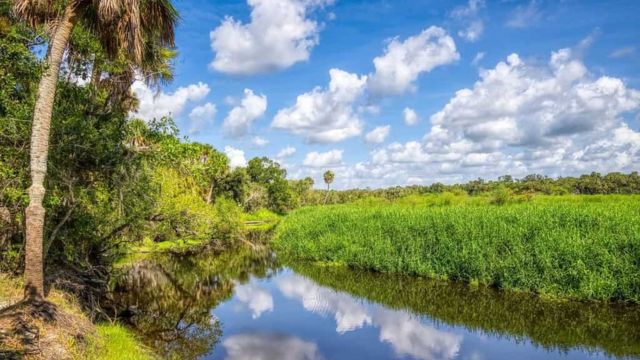Florida, a state teeming with natural wonders, diverse wildlife, and rich history, also holds a mysterious side inhabited by creatures that defy scientific explanation. Known as cryptids, these enigmatic beings have become the subjects of folklore, legends, and eyewitness accounts.
While some believe in their existence as undiscovered animals, others dismiss them as hoaxes, misidentifications, or products of imagination. In this blog, we delve into three captivating Florida cryptids—the skunk ape, the wampus cat, and the Pensacola sea monster—exploring their appearances, behaviors, and the stories surrounding them.
The Skunk Ape
The skunk ape, often regarded as a regional variant of Bigfoot or Sasquatch, is a hairy, bipedal humanoid standing between 6 and 8 feet tall, weighing around 450 pounds. Inhabiting remote Florida forests and swamps, especially in the Everglades and the Big Cypress National Preserve, the skunk ape is described as nocturnal and omnivorous.
Despite numerous alleged sightings and evidence, such as photographs and footprints, mainstream science has yet to verify its existence. The creature has, however, become an iconic part of Florida culture, even inspiring the Skunk Ape Research Headquarters in Ochopee, Florida, where enthusiasts can explore exhibits and join guided tours.
The Wampus Cat
Rooted in Native American folklore, the wampus cat is a large, feline-like creature with six legs, known for roaming the Everglades and the Appalachian Mountains. Legends vary, but a common version recounts a human woman cursed for spying on a sacred ceremony, transforming her into a half-human, half-beast creature. Sightings of the wampus cat have been reported, dating back to the 19th century, but like the skunk ape, it remains unconfirmed by science. Some experts attribute sightings to misidentifications of normal animals, such as bobcats or cougars.
The Pensacola Sea Monster
Contrary to its land-dwelling counterparts, the Pensacola sea monster resides in the ocean. Described as a marine reptile resembling a plesiosaur, this cryptid was first reported in 1962 by a fisherman named Edward Brian McCleary. His account of a serpent-like creature near a shipwreck stirred controversy, with some speculating it was a living fossil. However, subsequent sightings lacked detail, and no scientific investigations have confirmed the Pensacola sea monster’s existence. It remains a mysterious and intriguing part of Florida’s maritime lore.
Conclusion
Beyond its well-known attractions, Florida’s cryptids add an extra layer of intrigue and wonder to the state’s cultural tapestry. Whether real or products of imagination, the skunk ape, wampus cat, and Pensacola sea monster embody the diversity and mystery that make Florida a captivating destination.

